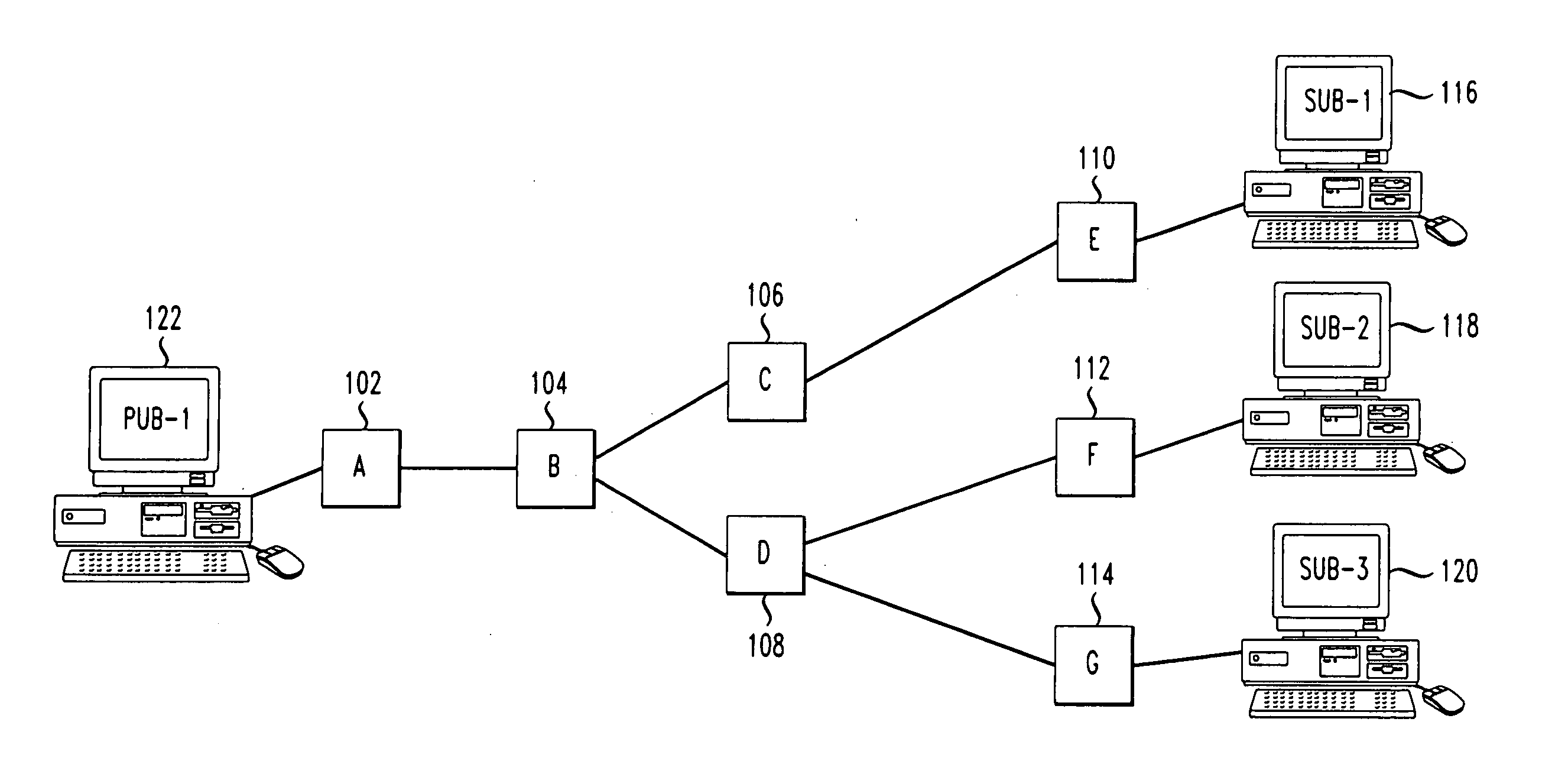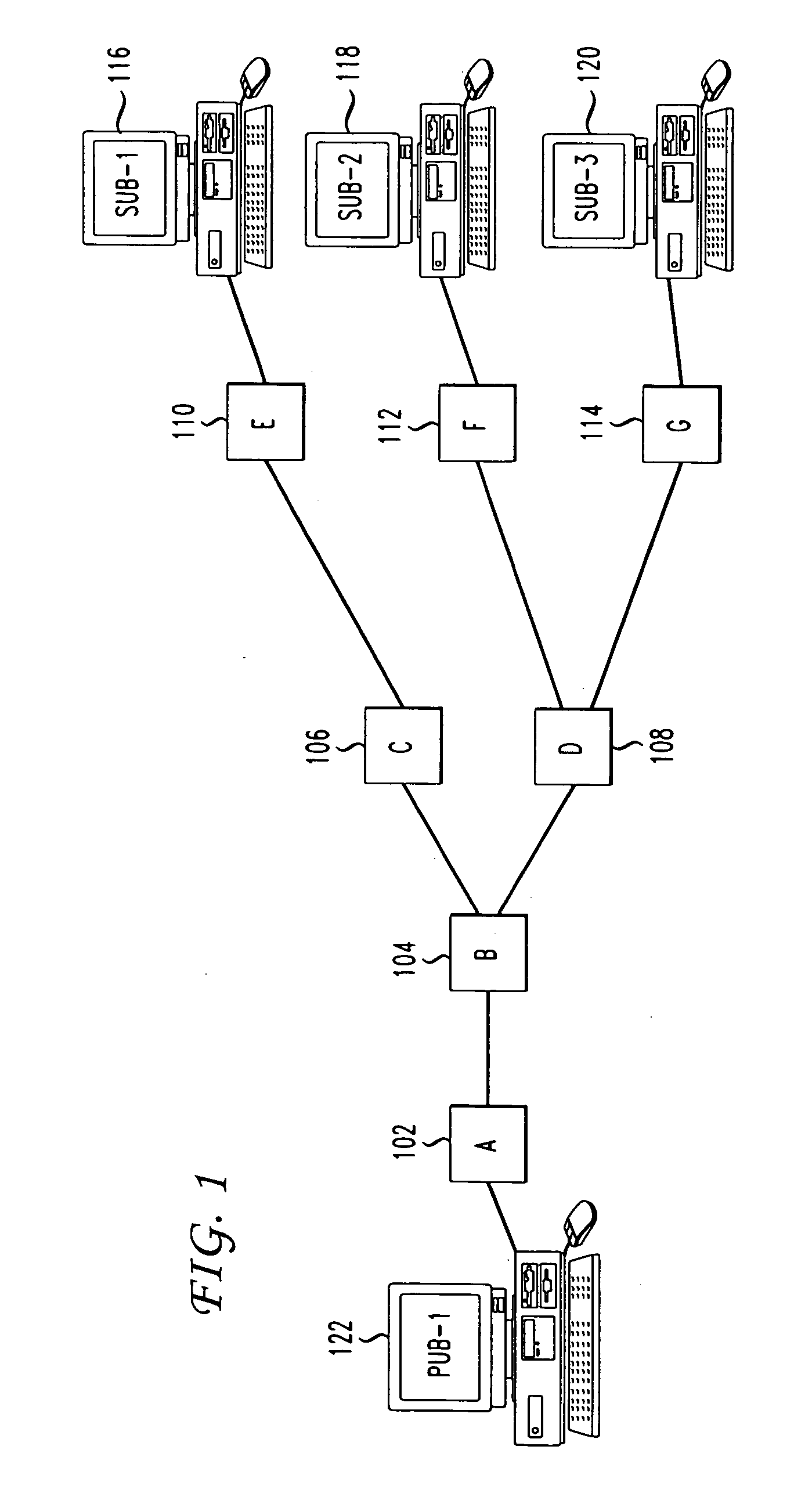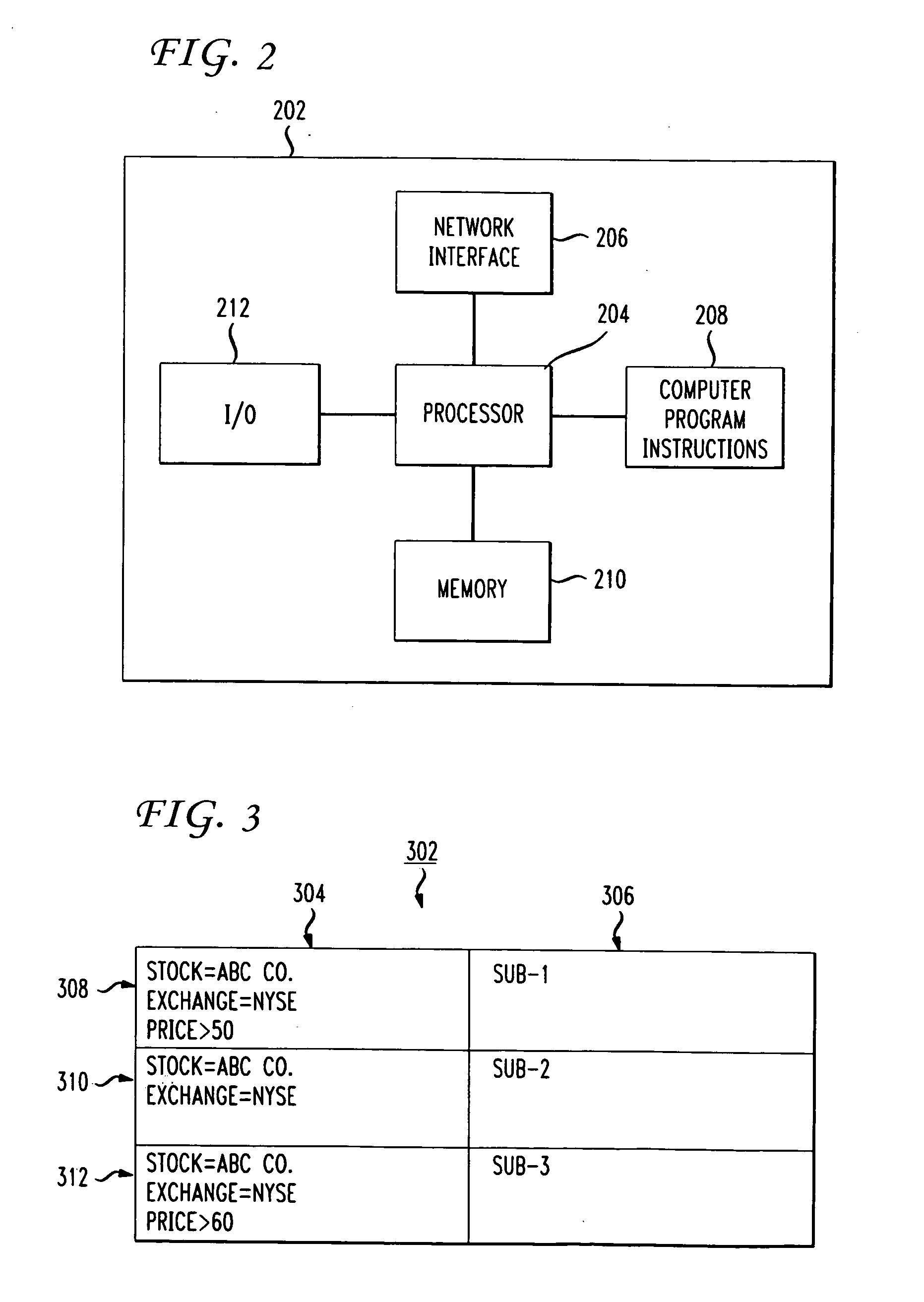Content based data packet routing using labels
a content and data packet technology, applied in the field of data networking, can solve the problems of slow content matching, large traffic, slow parsing xml descriptions and associated matching of content to user xml queries, etc., and achieve the effect of faster and more efficien
- Summary
- Abstract
- Description
- Claims
- Application Information
AI Technical Summary
Benefits of technology
Problems solved by technology
Method used
Image
Examples
Embodiment Construction
[0020]FIG. 1 shows an overlay network in which the content based routing principles of the present invention may be implemented. FIG. 1 shows overlay routers A 102, B 104, C 106, C108, E 110, F 112 and G 114. These routers may be implemented as is well known in the art using, for example, programmable computers. A high level block diagram of a network router is shown in FIG. 2. FIG. 2 shows a network router 202, the functioning of which is controlled by processor 204. Processor 204 executes stored computer program instructions 208 which define the overall operation of router 202. Router 202 also contains memory 210 for storing data and various routing table information as will be described in further detail below. Memory 210 may be any type of computer readable storage medium, such as magnetic, optical, or any other type of storage media. While memory 210 is shown in FIG. 2 as a single unit, memory 210 may be implemented with multiple memory units, with each such memory unit being a...
PUM
 Login to View More
Login to View More Abstract
Description
Claims
Application Information
 Login to View More
Login to View More - R&D
- Intellectual Property
- Life Sciences
- Materials
- Tech Scout
- Unparalleled Data Quality
- Higher Quality Content
- 60% Fewer Hallucinations
Browse by: Latest US Patents, China's latest patents, Technical Efficacy Thesaurus, Application Domain, Technology Topic, Popular Technical Reports.
© 2025 PatSnap. All rights reserved.Legal|Privacy policy|Modern Slavery Act Transparency Statement|Sitemap|About US| Contact US: help@patsnap.com



